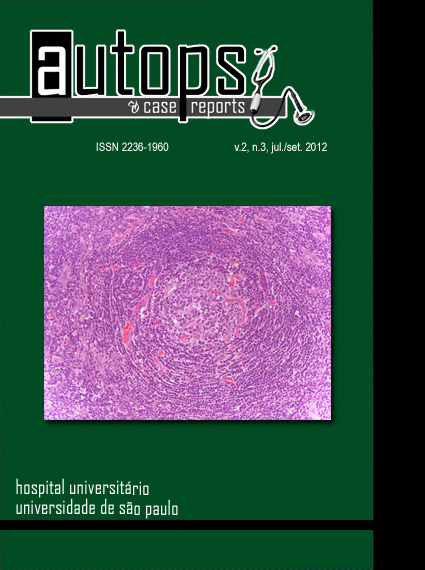Strongyloides stercoralis hyperinfection: a dreaded but still missed diagnosis
DOI:
https://doi.org/10.4322/acr.%25y.48197Keywords:
Strongyloides stercoralis, Glucocorticoids, Immunocompromised host, Shock, septicAbstract
Strongyloides stercoralis (S. stercoralis), an intestinal nematode, is endemic in tropical and subtropical regions, being less prevalent in temperate climates. The number of infected persons worldwide ranges between 10 million and 100 million people. In Brazil the reported prevalence is 13%. Chronic infection may be asymptomatic or accompanied by gastrointestinal and respiratory symptoms. Under immunosuppressive conditions, the infection assumes serious proportions frequently accompanied by septic shock, disseminated intravascular coagulopathy and respiratory distress syndrome. The authors report a case of a 50-year-old female patient who was a chronic user of glucocorticoids and had been seeking medical attention for two months because of continuous gastrointestinal symptoms. She was admitted to the emergency room with clinical signs of septic shock and died after four days despite an adequate antibiotic regimen, vasopressor drugs, and ventilatory support. The autopsy revealed the unsuspected finding of S. stercoralishyperinfection and septicemia.Downloads
Download data is not yet available.
Downloads
Published
2012-09-09
Issue
Section
Article / Autopsy Case Report
License
Copyright
Authors of articles published by Autopsy and Case Report retain the copyright of their work without restrictions, licensing it under the Creative Commons Attribution License - CC-BY, which allows articles to be re-used and re-distributed without restriction, as long as the original work is correctly cited.
How to Cite
Crenitte, M. R. F., Campos, F. P. F. de, & Felipe-Silva, A. (2012). Strongyloides stercoralis hyperinfection: a dreaded but still missed diagnosis. Autopsy and Case Reports, 2(3). https://doi.org/10.4322/acr.%y.48197



